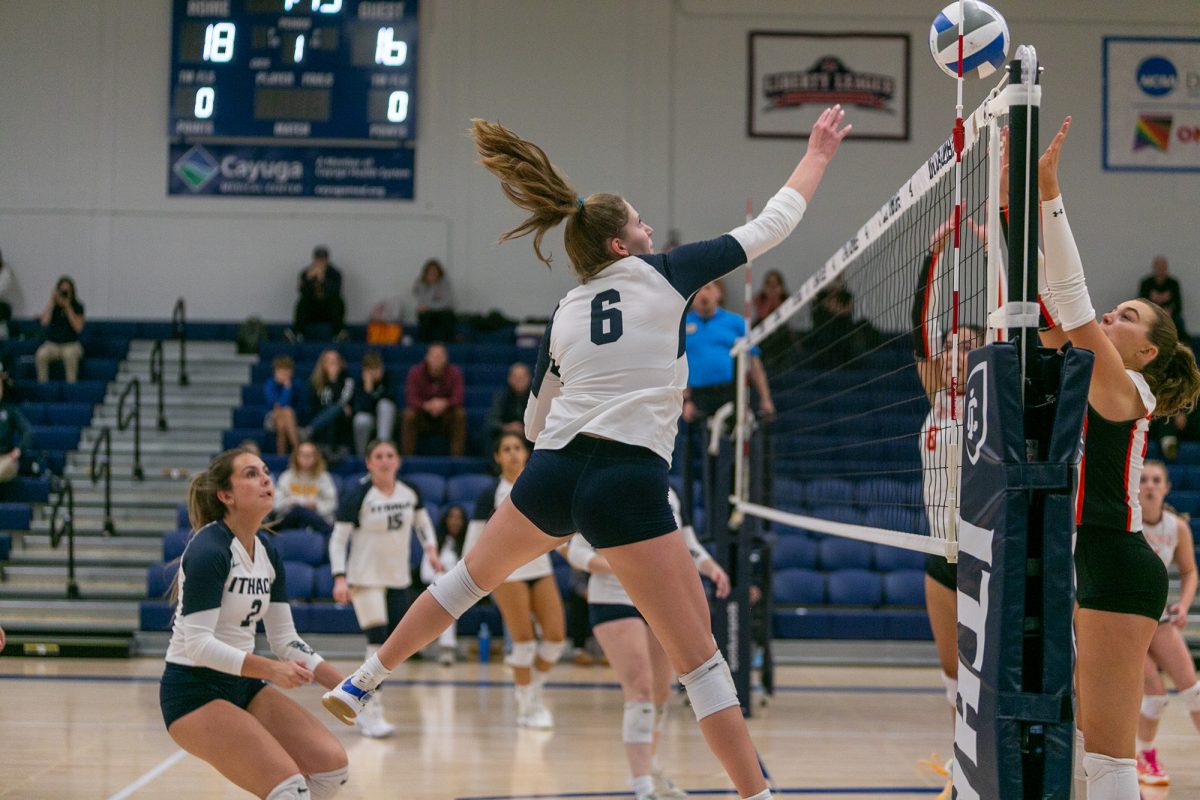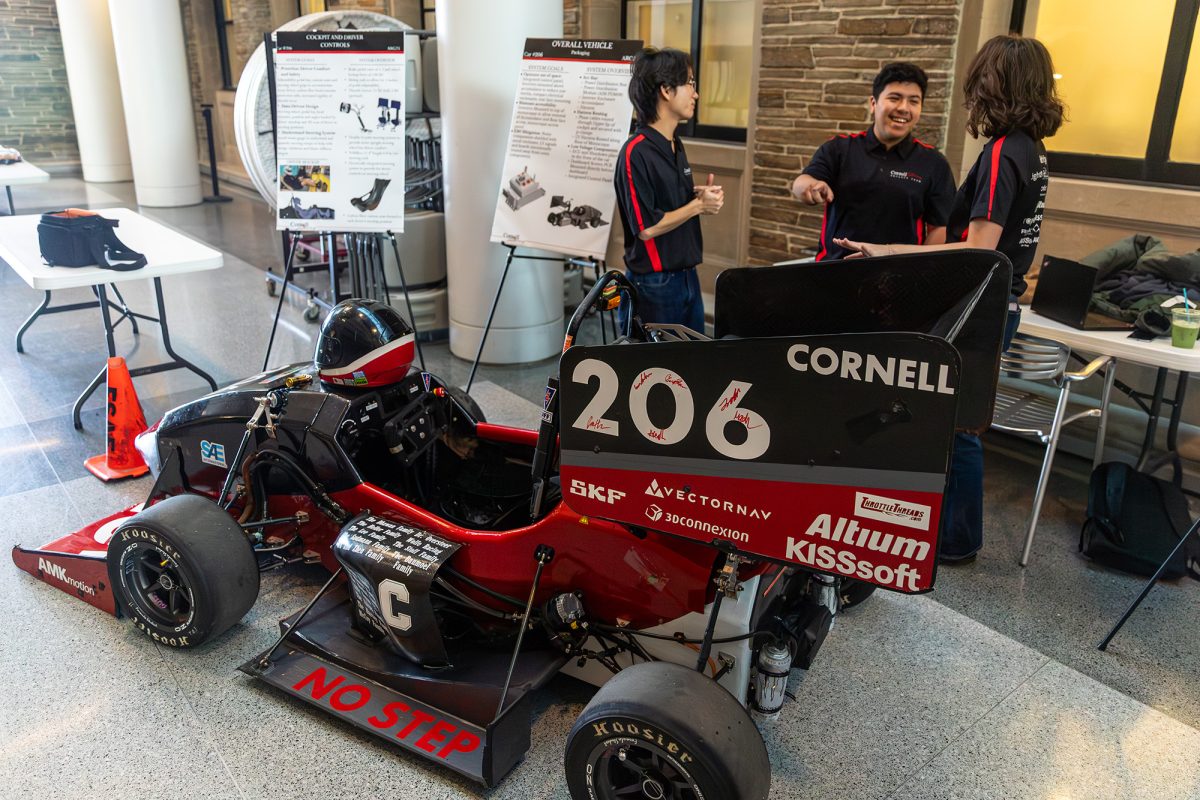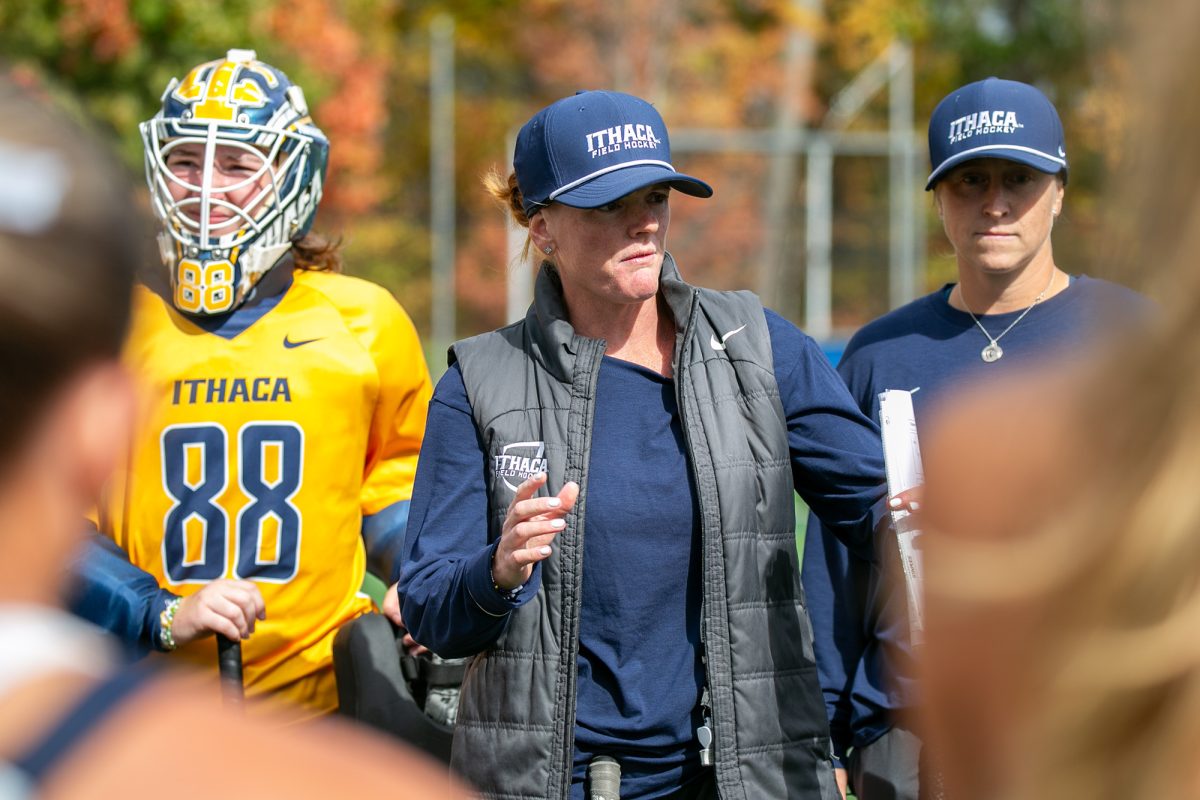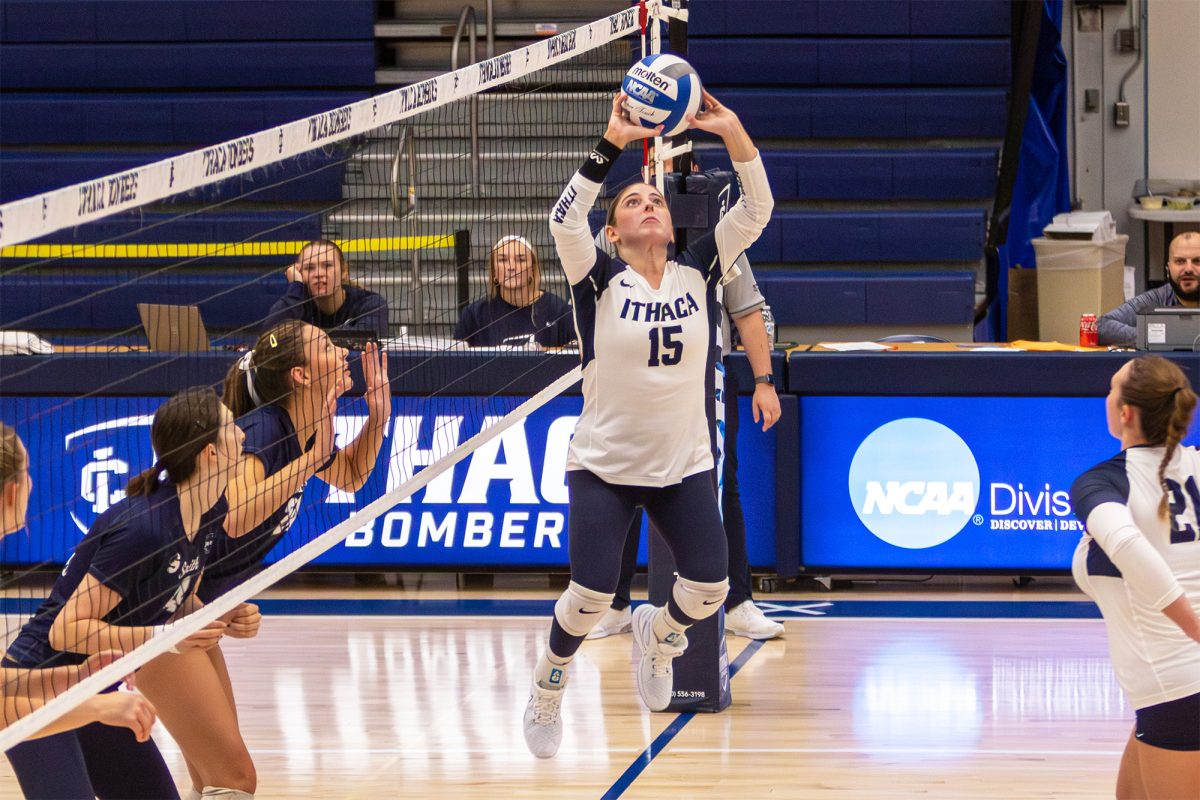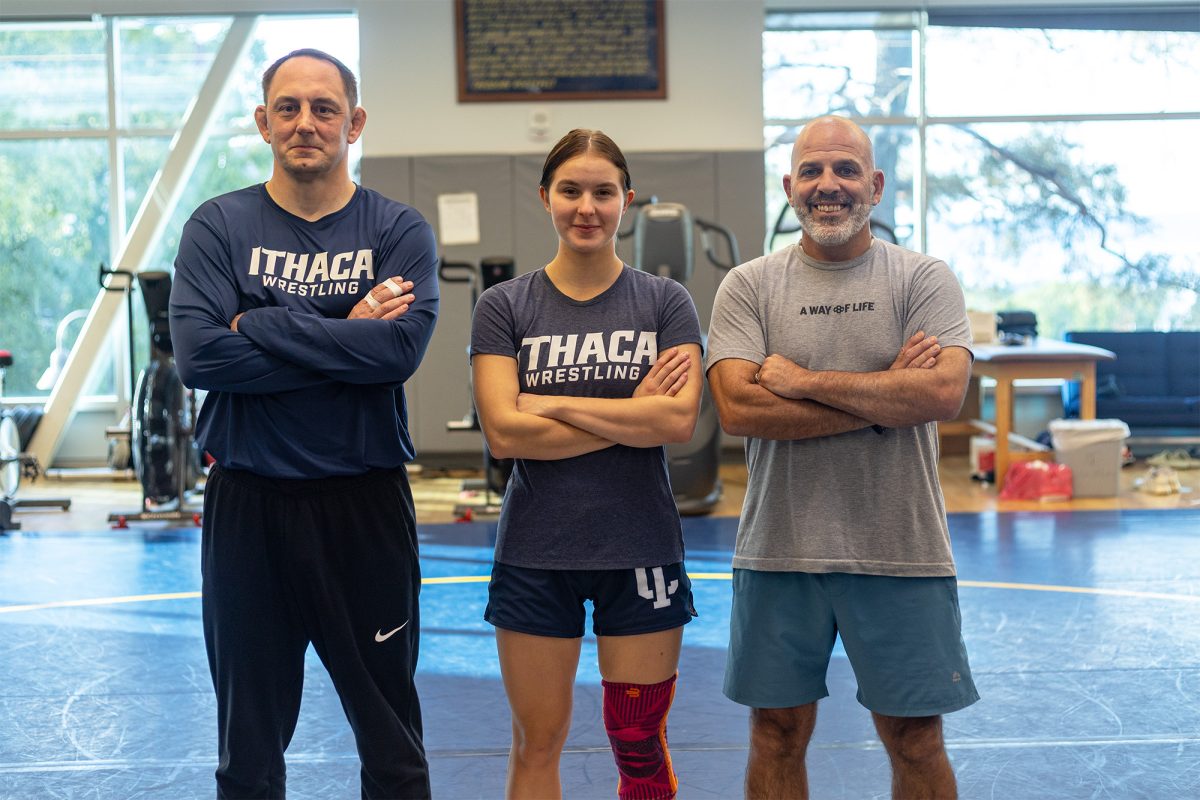When graduate student Philip Giordano started working as a Fitness Center trainer during his fifth year at Ithaca College, he was opened up to a new community after the one he had grown accustomed to for four years was mostly gone after graduation.
“In the graduate program, we are always with the same kids in every single class,” Giordano said. “It’s always the same 90 kids that you are with for every course, so it’s great to be assigned to students who are in different realms and different schools with different majors because you get to talk to them and hear different things that are going on around campus.”
The Fitness Center employs 19 student physical trainers who are either certified personal trainers or are graduate students in the physical therapy program at the college. To become a personal trainer at a typical training and workout facility, the trainer must complete an online course and pass a test to prove their competence. This leads to a personal training certification, which costs between $489–$1,399. Graduate level physical therapy students at the college are able to avoid the process of becoming certified physical trainers for the Fitness Center as long as they have completed their undergraduate degrees in physical therapy and have passed an exam that gives them a license to be a personal trainer.
The trainers work with students and faculty at the college who want guidance when working out. Some students want training in order to familiarize themselves with how machines work and learn proper exercise forms. Others go to the program in hopes of losing weight, while some students go to learn healthy and effective ways to gain muscle mass.
Giordano said that being a personal trainer has helped him develop interpersonal skills with clients and has allowed him to practice developing exercise routines to help others improve their physical health.
“I’m very capable of developing exercise plans for individuals based on their specific needs,” Giordano said. “I figured [training] would be a little bit more interactive and intriguing for me instead of sitting behind the desk and checking out different equipment.”
Senior Devin Mott is the head trainer at the Fitness Center and said that working as a personal trainer during his time as a student has helped him learn skills that will transfer into his schoolwork as well as his future career.
“This position has been fundamental in my IC experience and allowed me to integrate academic experiences into a professional setting,” Mott said. “While the job experience has been great, being able to share my experiences and fitness knowledge with others has been the most rewarding aspect. The experiences I have had working for the Fitness Center have opened up so many opportunities for me and has allowed me to be successful as a student.”
Giordano said his experience as a personal trainer has led him to be able to interact with faculty in a completely new way.
“Right now, I am working with a female administrator, and it’s really cool to be able to talk to her and have a different kind of conversation than I would normally have with my friends who are students,” Giordano said. “Talking to her is awesome — we have great conversations and are always laughing.”
The training sessions cost approximately $20 per session for four sessions, but rates drop to $16 and $14 per session for 7 and 10 sessions respectively. For partnered sessions, rates drop to $12.50 per session for four sessions, $10 per session for seven sessions and $8 per session for 10 sessions. The cost of working with a trainer at the college is significantly cheaper than a trainer at a private gym would cost. The price of a one-hour personal training session at Littlefield Coaching and Training in Ithaca would be $55. It is also cheaper than Cornell University’s personal training program, in which one session costs $40 and four sessions cost $37.50 per session.
Graduate student Melissa Patnella is also a personal trainer at the Fitness Center. She said that though the low cost of trainers gives more people an opportunity to learn work out habits, there are still students who do not get the opportunities to benefit from personal training because they cannot afford it.
“I think that the unfortunate part of personal training is that even though our students pay at a very discounted rate, they still do pay for personal training,” Patnella said. “When money is tight, and you’re only meeting once a week for the semester, it’s hard to give the client what they want and what they need.”
Patnella said that though the cost can be a factor, the lower rates still allow for personal training to be accessible to many students. She also said that having students training their peers helps the client feel more comfortable.
“It is so much better to be with a student,” Patnella said. “The client automatically has an idea that we are on the same playing field and they are doing this together as opposed to an adult whose career is doing this. This seems to be intimidating, as with a student, people see it as an open door thing, as opposed to something intense they may shy away from.”





